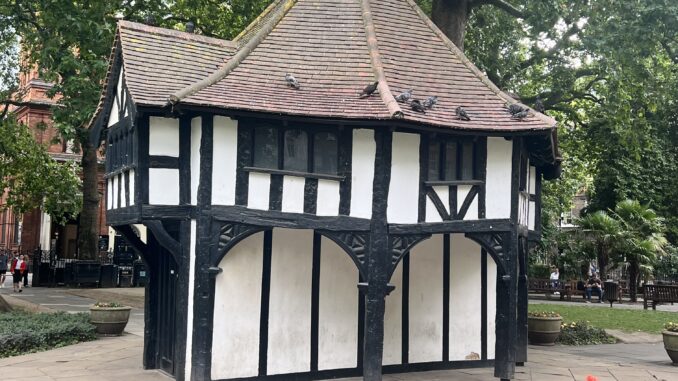
There is an ancient hut in the centre of Soho Square, a half-timbered affair with beams that sag and bow. It gives the impression of a building that might even pre-date the laying out of the square in the 1670s.
But, as ever, appearances are deceptive. This structure has been in place ‘only’ since 1928 – not even a century old! A London juvenile.
(Although to give it its due, the timber ‘framing’ is from reused 17th/18th century wooden boards, and the English Heritage listing suspects a bit of even earlier material in there too.)
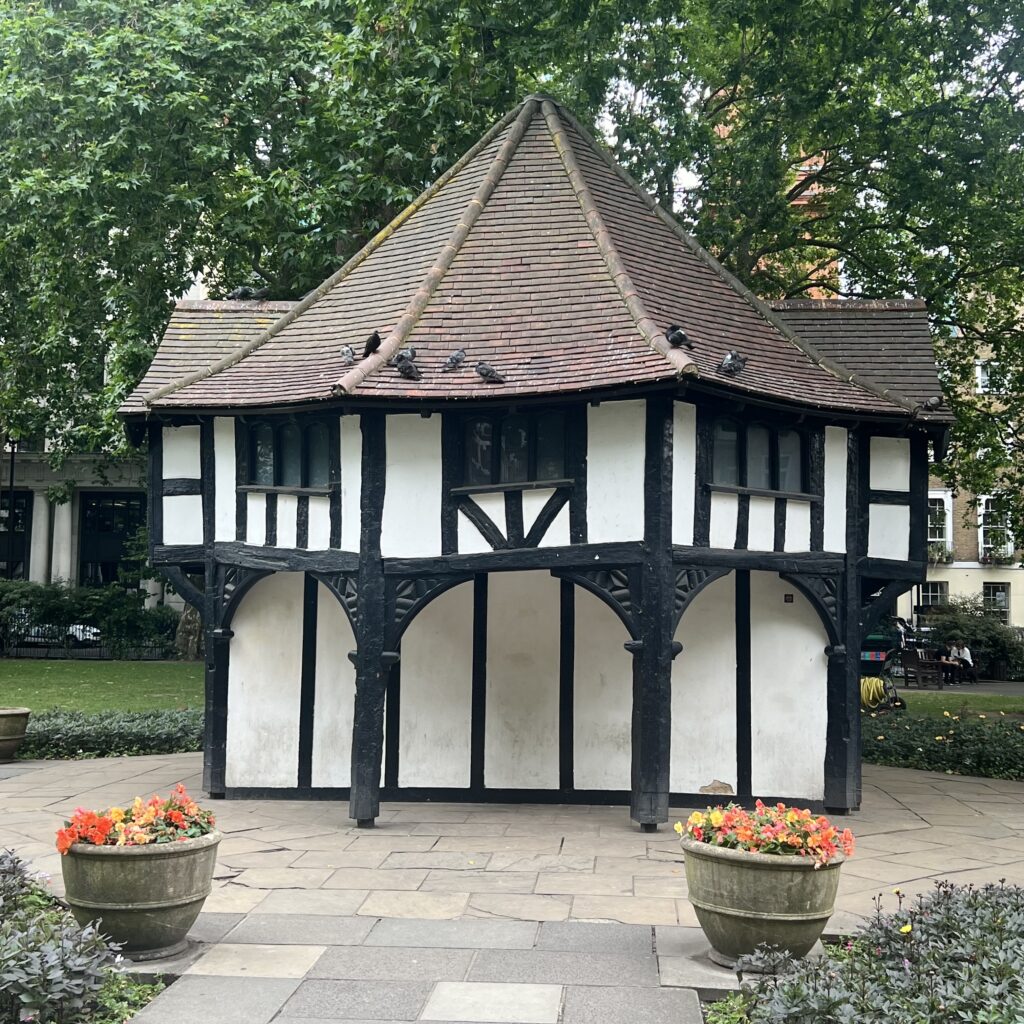
The hut is used a store by the square’s gardeners, but it covers a deep secret. When it was originally built it was as an access to an underground electricity substation which, during world war 2, became a bomb shelter.
About ten years ago this space came on the market, with ‘potential’ to develop the 3,200 sq ft (300 sq metres) space as a cafe, a restaurant or somesuch, but nothing has happened so far, and one suspects nothing much ever will.
But if it’s genuinely old you want, walk half a dozen paces from the hut towards Oxford Street and you can clap your eyes on a 1681 statue of Charles II by the Danish sculptor Caius Gabriel Cibber.
Soho Square was once King Square (after Charles) and this statue “originally stood on top of a pedestal above a fountain that was decorated with figures of gods representing the four main rivers of England: the Thames, the Tyne, the Humber and the Severn” (I mean, who wouldn’t want to see that). The water flowed due to an ingenious pumping arrangement that used a windmill in what is now Rathbone Place.
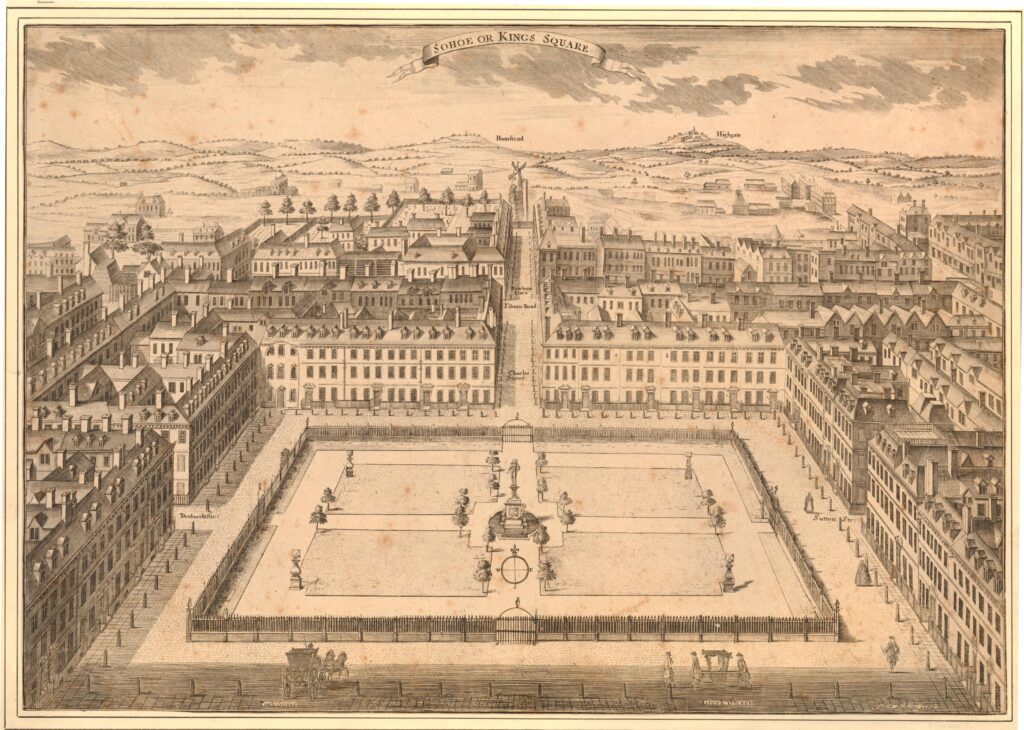
Presumably a couple of centuries of water splashing about in concert with London weather and pollution rather deteriorated poor old Charles, and in the 1870s the fountain was demolished and the statue removed.
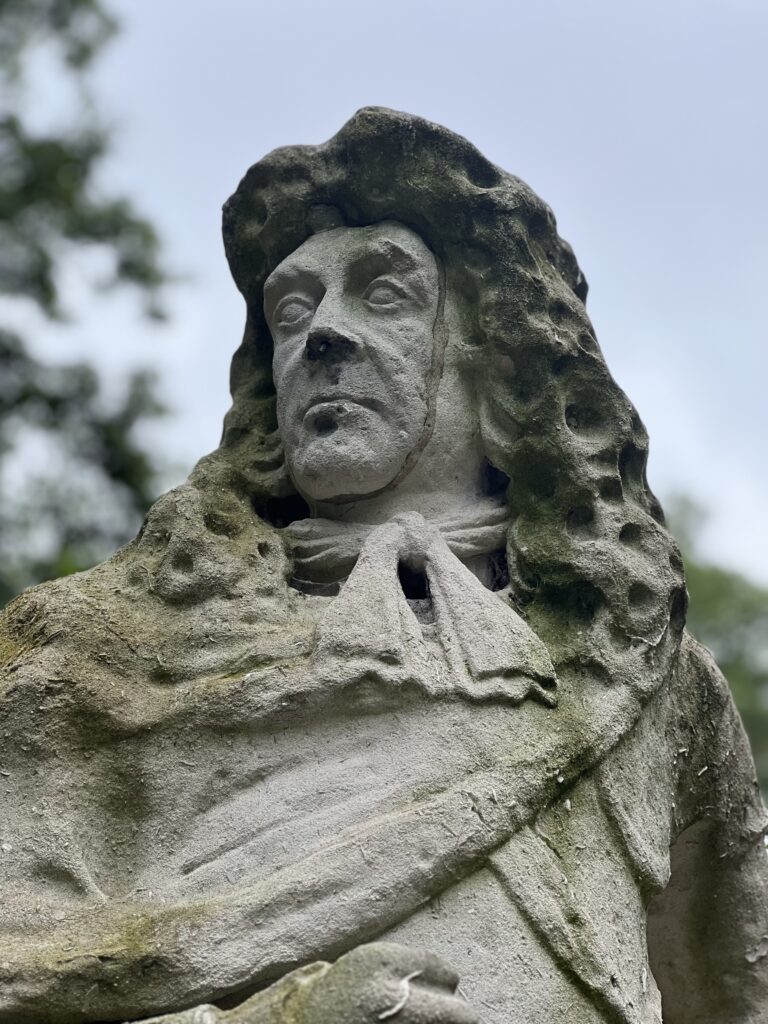
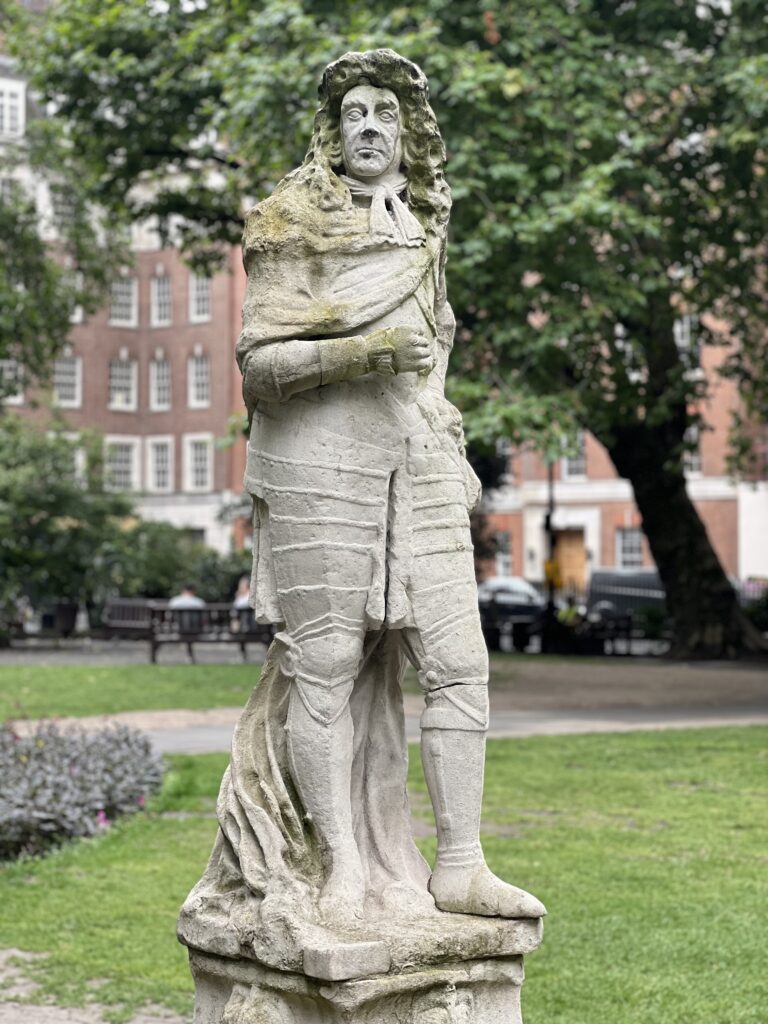
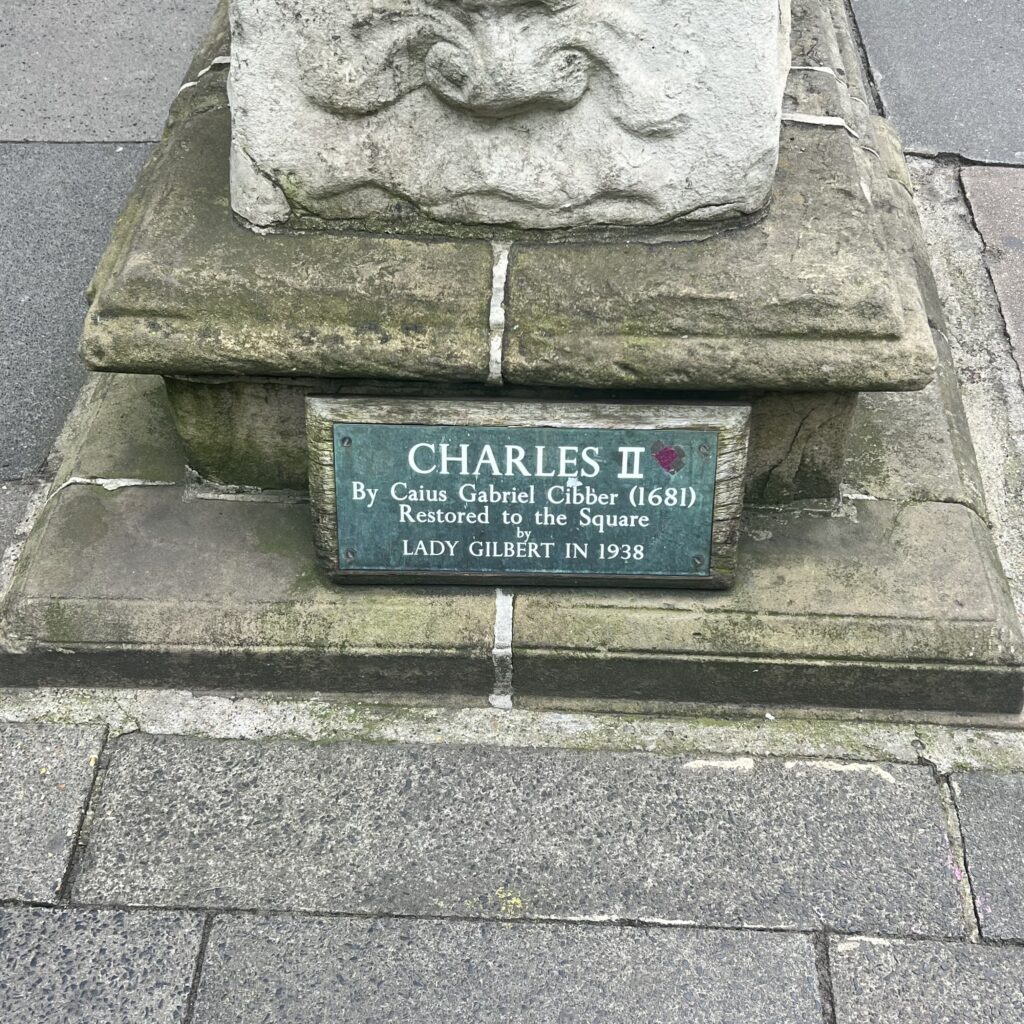
It came into the possession of a Thomas Blackwell (of Crosse & Blackwell, which had offices at 21 Soho Square). He gave it to an artist friend called Frederick Goodall with perhaps a view to it being restored, but Goodall installed it on a island in a lake in the garden of his house (called Grim’s Dyke) in Harrow Weald. (Goodall’s work seems to follow just about every dreadful cliche of high Victoriana by the way.)
Grim’s Dyke was bought by W.S. Gilbert (of “and Sullivan) in 1890, and although Crosse + Blackwell asked for the statue back, he seems to have ignored their requests. Eventually, after Gilbert’s widow’s death in 1938, it was returned to the square, hence the plaque at the foot of the statue.
At some point Charles seems to have had a face transplant, the join being visible right round his boat race. It’s also thought that at least one leg has been replaced, as has an arm; what is original (e.g. the plinth) is much corroded.

